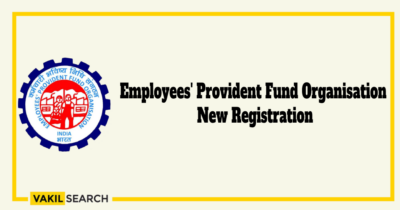The PF and ESIC are the most sought-after schemes for working professionals all over the country. But what’s the difference between them? Read on to know!
PF and ESI are two social security schemes that are available to the working class in India. Both of these schemes were introduced to improve the living conditions of the working class. The Ministry of Labour and Employment is in charge of both of them. In both schemes, the employer contributes an amount in proportion to the employee’s salary, and the total is then deposited into the employee’s account. However, there is a difference between the ESI & PF Registration, and they serve different purposes. In this article, we will discuss the difference between ESI & PF Registration.
What is ESI?
Employee State Insurance Corporation (ESIC), also known as the Employee State Insurance Corporation, is a legally autonomous body that reports to the Indian Government’s Ministry of Labour and Employment. It manages the ESI scheme by the ESI Act of 1948. The ESI scheme was created to meet the health and insurance needs of the employees.
Eligibility Criteria
- All organisations are listed under the Shops and Establishments Act and the Factories Act
- Factories and other businesses must register with the ESI schemes if they have ten or more employees
- Employees earning wages not exceeding ₹21000/- per month will be covered to check the requirements of ESIC registration.
Benefits of the ESI Scheme
Registered employees and their dependents are guaranteed several benefits under the ESIC Scheme such as:
- Medical benefits: Reasonable medical care and clinical investigation for covered individuals and their families
- Medical Care: Within ESI, medical facilities for the insured person and his spouse.
- Sickness Benefits: Increased and extended sick leave benefits.
- Disability benefits: For as long as the employee’s disability prevails, compensation is provided
- Dependent Benefits: The dependents of the insured individual who passes away as a result of a work injury receive a certain amount.
- Maternity benefits: For 26 weeks, maternity leaves are paid. In the event of a miscarriage, six weeks are granted.
- Funeral benefits: A one-time payment is provided for the insured person’s funeral.
- Unemployment Assistance under Rajiv Gandhi Sharmik Kalyan Yojana
- Allowance for vocational rehabilitation
Documents Required for the ESIC Registration
Documents required for the ESIC registration are
- In the case of a private limited company, the business’s certificate of incorporation
- Under the Factories Act or the Shops and Establishments Act, a license or a registration certificate
- Certificate of Registration for each entity
- Detailed information about each employee, including their monthly salary
- Information about the partners, shareholders, and directors of the business or organisation
- The company’s bank statements and enough documentation on the start of operations
- The most recent electricity bill and proof of address from the business or organization’s PAN card.
This is all the paperwork required for ESIC registration, and there is a major difference between the ESI & PF Registration.
Employee Provident Fund (EPF)
The Employees’ Provident Fund and Miscellaneous Act of 1952 established the Employees’ Provident Fund (EPF), which is a savings scheme.
Government, employer, and employee representatives make up the central board of trustees, which is assisted by the Employees’ Provident Fund Organisation. The Ministry of Labour and Employment is responsible for managing EPFO, which operates directly under governmental control.
EPF, also known as PF in India, is a scheme that allows employees to set aside a percentage of their income for use after retirement or in case of necessity. Each month, a set amount is contributed to PF by both the business and the employees.
Eligibility Criteria
- Any factory or organisation with at least 20 employees must register with the EPF Scheme
- An organisation with fewer than 20 employees may voluntarily register
- All employees who get a monthly salary of less than ₹15,000 are obligated to deduct and deposit EPF,
- Employees of a company who have already registered for the EPF Scheme are automatically entitled to have their Provident Fund account opened as of the date of their hiring.
Benefits of PF
There are many benefits of registering for the EPF scheme such as
- The savings made in an EPF account can be withdrawn at any time for any reason, such as education, marriage, or a medical emergency, or it can be obtained after retirement
- The entire amount will be exempted from income tax if you remove the PF amount and interest at maturity or after 5 years of completion of continuous employment
- EPF accounts are now entirely created and maintained online, and employees can access their EPF funds from anywhere in the world using their UAN
- The nominee will get the employee’s PF balance and any interest that has accrued during that time in the event of their death.
Documents Required for PF Registration
The list of paperwork needed to register for the EPF scheme is as follows:-
- Establishment information
- PAN Card copy
- Address of the business
- In the case of the factory, a copy of the factory license
- In the case of a start-up, a startup registration certificate
- In the case of MSME, a copy of the MSME Registration certificate
- Ownership Details
- E-contact information
- Detail of Primary and other owners
- Designation & date of joining the establishment
- Address and contact information
- Details of certificates. E.g. GST Registration, Shops and Establishment registration or any other certificate granted by the government
- Employee details covered under the EPF Act
- Details of Branches and divisions
- Details of activities
- NIC Code of activity (Not Compulsory)
- Nature of work
- Proof of Address
- Agreement between the employer and the employee regarding voluntary coverage.
The employer contribution is 12% out of the minimum salary of ₹15,000 which is ₹1800 per month. The EPF will receive ₹1800 from both the employer and the employees. EPF contributions are deposited on a monthly basis, and the interest earned on those contributions is computed annually based on established rates and placed into the EPF account. All these documents show the difference between the ESI & PF Registration.
Conclusion
We hope that after reading this post, you now understand the difference between the PF and ESI Registration. The Government of India established the ESI scheme to provide workers with financial, medical, and other benefits.
The Employees’ Provident Fund, on the other hand, is a social security scheme that enables employees to set aside a small amount of their wages for future benefits. If you are a small business owner looking to complete your ESI & PF registration process, our legal wizards at Vakilsearch can help you get it done in a hassle-free way right from the comfort of your home.
Read more,









